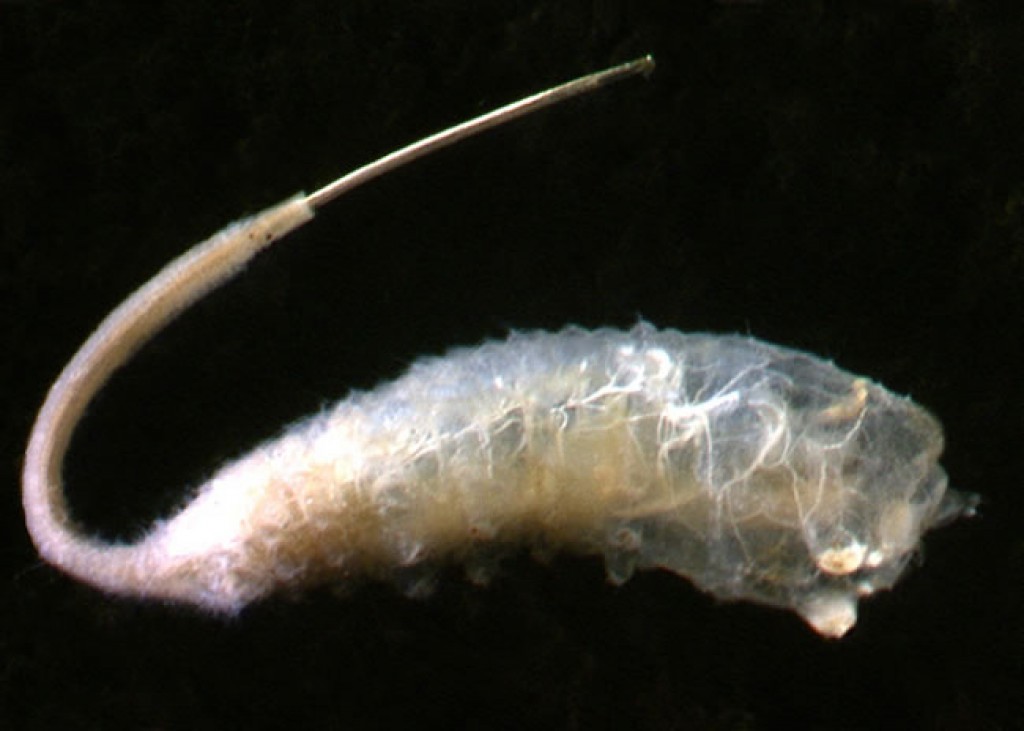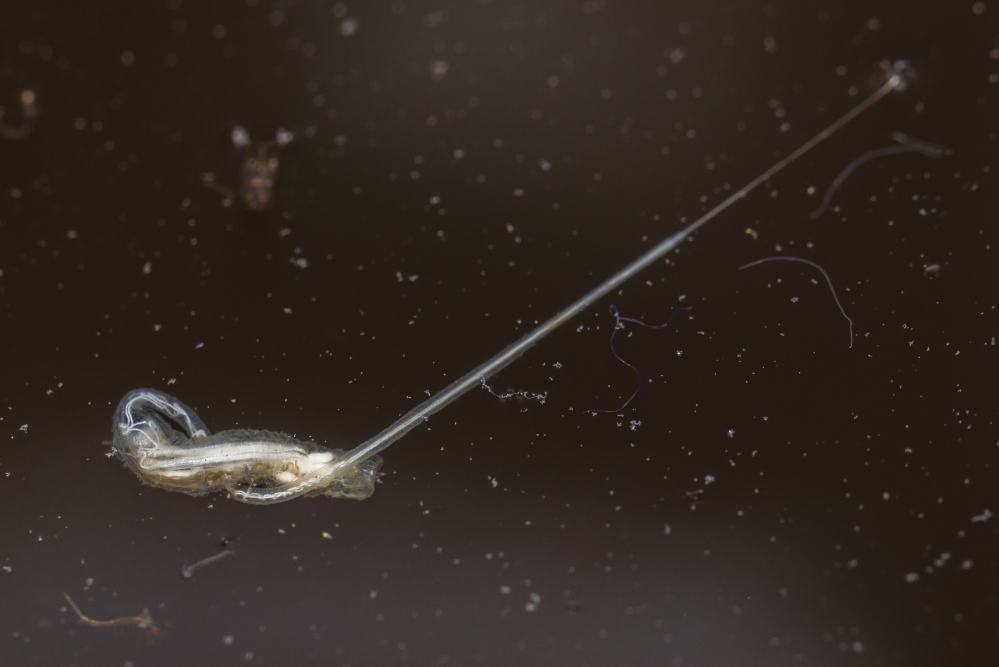The rat-tailed maggot, Eristalis tenax, is a larval stage of the drone fly and has garnered attention for its distinctive morphological features and its association with myiasis in animals and humans. These aquatic maggots can be found in a wide range of environments, including stagnant water, polluted water, and fields rich in organic matter. This comprehensive article delves into the captivating life cycle of rat-tailed maggots, their ecological roles, their potential impact on human and animal health, and their interactions with other species.
Life Cycle and Habitat
Rat-tailed maggots undergo a fascinating life cycle that encompasses aquatic larvae, mature larvae, pupal stage, and the adult drone fly. The larval stages primarily inhabit stagnant water, often found in areas abundant with animal faeces and decaying organic matter. These environments provide a plentiful food source for the maggots, which feed on decomposing animal material, carcasses, and other forms of organic matter.
A remarkable feature of the rat-tailed maggot is its telescopic breathing tube, which allows it to breathe while submerged. The larva extends this tube to the water surface, ensuring a constant supply of air. This adaptation is crucial for the maggot’s survival in oxygen-depleted habitats. As the maggot matures, it prepares for the pupal stage, which typically occurs on dry land. This stage is marked by the formation of a protective case around the maggot, which allows it to undergo metamorphosis. Once the adult drone fly emerges, it joins other adult insects, such as adult bot flies, adult house flies, and adult males, in the quest for mating and reproduction.
The adult drone fly is a critical pollinator, visiting flowers to feed on nectar and, in doing so, transferring pollen from one flower to another. This process is essential for the reproduction of numerous plant species, highlighting the importance of drone flies in maintaining biodiversity and ecosystem stability.

Myiasis and Human Health
Rat-tailed maggots are linked to a condition called myiasis, which refers to the infestation of animal tissues or body cavities by fly larvae. Myiasis can be classified into different types, including gastrointestinal, rectal, and accidental myiasis. The rat-tailed maggot larvae are responsible for intestinal and rectal myiasis, which can cause abdominal pains and other complications in both animals and humans.
Intestinal myiasis is often caused by the ingestion of contaminated water or food containing the larvae. This type of myiasis can result in abdominal pain, nausea, vomiting, diarrhoea, and other gastrointestinal symptoms.
Rectal myiasis occurs when the maggots infest the rectal area, causing pain, irritation, and even blood in the stool. In some cases, the larvae may consume blood from their host, leading to a condition known as giant blood myiasis. Although rare, these cases can cause significant pain and distress to the affected individual.
Accidental myiasis is another type of infestation that can occur when the larvae are unintentionally introduced into a wound or other body opening. This type of myiasis is relatively rare but can lead to severe infections and complications if left untreated.

Ecological Importance and Interactions
Despite their unsettling nature, rat-tailed maggots play a crucial role in the ecosystem by decomposing organic matter and recycling nutrients. They share their habitats with other aquatic insects, such as the water scorpion, which may prey on the maggots. Additionally, adult drone flies are essential pollinators, aiding in plant reproduction.
Rat-tailed maggots also interact with various other species in their environment. For instance, their decomposing activities can attract other scavengers, such as beetles and other fly species, that also feed on decaying organic matter. Moreover, the larvae themselves serve as a food source for numerous predators, including amphibians, fish, and aquatic birds. These interactions demonstrate the interconnectedness of ecosystems and the importance of each species in maintaining balance within their habitats.
Rat-tailed maggots have also been known to coexist with social insects, such as ants and termites, which share similar preferences for damp and nutrient-rich environments. While these social insects may not directly interact with the maggots, their presence indicates a thriving ecosystem that supports a wide range of species.
Behaviour and Morphological Features
Rat-tailed maggots possess several morphological features that make them well-adapted to their environment. As previously mentioned, their telescopic breathing tube is a key adaptation that allows them to survive in oxygen-poor habitats. This tube can be extended or retracted depending on the maggot’s position within the water column, and it possesses tiny hairs that help prevent water from entering the tube.
In addition to their breathing tube, rat-tailed maggots are equipped with a highly sensitive receptive field. This feature allows them to detect minute changes in water temperature and the presence of potential predators or food sources. Their visual field is also well-developed, enabling them to navigate their surroundings effectively.
Rat-tailed maggots have a cylindrical body shape, which facilitates efficient movement through the water. They use their body’s contractions to propel themselves forward, much like an inchworm, and can rapidly escape from potential threats. This unique method of locomotion is another adaptation that has allowed rat-tailed maggots to thrive in their preferred habitats.
Prevention and Control
Given their association with myiasis and the potential health risks they pose, it is essential to implement prevention and control measures to minimise the presence of rat-tailed maggots in human and animal environments. Ensuring proper sanitation and hygiene in animal facilities can significantly reduce the risk of infestation. This includes regularly cleaning and disinfecting enclosures, promptly removing animal waste, and maintaining proper waste disposal systems.
For humans, the consumption of clean, treated water and proper food handling practices can help prevent the accidental ingestion of rat-tailed maggot larvae. Individuals should also exercise caution when swimming or wading in stagnant or polluted water, as this can increase the risk of exposure to the larvae.
Conclusion
In conclusion, the rat-tailed maggot is a captivating yet disconcerting insect that has captured the attention of researchers and the general public alike. Its unique adaptations and life cycle make it well-suited to its environment, and its ecological roles cannot be ignored. However, the association of rat-tailed maggots with myiasis serves as a reminder of the potential dangers these creatures may pose to human and animal health. By understanding their life cycle, ecological importance, and potential health risks, we can better appreciate these remarkable insects while also taking necessary precautions to protect ourselves and our environment.
Sam loves to learn about animals and their habitats. He has been a nature lover from a very young age, and has been writing papers and articles about wildlife for as long as he can remember.

I have lots of rat tailed maggots then the adult form drone fly.The eggs are laid by the adults in a good sized tub I have which I started filling with garden waste including grape vine branches I had pruned.
This tub started to fill with rain water,so I covered it with a piece of carpets Unbeknownst to me I had thus created an ideal environment for the rat tailed maggots.Im thrilled at all the wonderful adult drone flies that hatch out around early May.